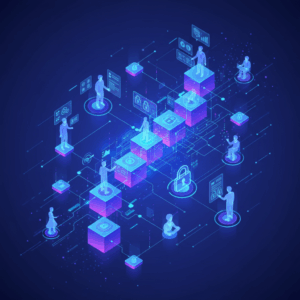Understanding AI and Machine Learning
Artificial Intelligence (AI) and Machine Learning (ML) are related but distinct fields in technology. AI focuses on creating systems that mimic human intelligence.
This includes tasks such as reasoning, language understanding, and decision-making. Machine Learning is a specialized branch within AI aimed at learning from data.
Definition and Scope of Artificial Intelligence
Artificial Intelligence is a broad field that involves designing systems capable of performing tasks that typically require human intelligence. This includes reasoning, problem-solving, and understanding language.
AI encompasses multiple technologies such as rule-based systems, natural language processing, and computer vision, aiming to create machines that can think and act like humans.
Its wide scope means AI covers many approaches and applications, from chatbots to autonomous robots, all designed to simulate various aspects of human cognition.
Focus and Function of Machine Learning
Machine Learning is a subset of AI that concentrates on enabling machines to learn from and improve based on data, without explicit programming for every specific task.
ML uses algorithms to detect patterns and make predictions, allowing systems to adapt and perform better over time as they process more data.
This focus on data-driven learning enables practical applications such as fraud detection, recommendation engines, and image recognition across industries.
Key Differences Between AI and Machine Learning
The primary distinction between AI and Machine Learning lies in the breadth of their scope. AI represents a wider field aimed at crafting intelligent systems.
Machine Learning narrows this focus by emphasizing the ability of machines to learn from data and improve autonomously over time, a critical function within AI.
Scope and Scope of Technologies
Artificial Intelligence covers a vast array of technologies including rule-based logic, expert systems, and natural language processing. It targets simulating broad human cognitive functions.
In contrast, Machine Learning focuses specifically on data-driven algorithms that enable models to identify patterns and adapt their output accordingly.
This difference means AI encompasses many paradigms, but ML offers a powerful, focused technique by automating learning from data rather than relying on rigid programming.
Algorithms and Data Usage
Machine Learning heavily depends on algorithms that analyze large datasets to discover insights and improve prediction accuracy over time.
AI systems might use rule-based programming or symbolic reasoning where explicit instructions guide behavior instead of learning from data.
Therefore, while ML revolves around continuous data-driven improvement, AI’s algorithms range broadly from static rules to adaptive learning models.
Relationship Between AI and Machine Learning
Machine Learning is a subset of AI, meaning all machine learning systems are forms of AI, but not every AI system employs machine learning methods.
AI includes both learning and non-learning approaches to mimic intelligence, whereas ML strictly involves systems that improve through experience.
This relationship highlights ML as a key driver of modern AI advancements, though AI itself retains a larger conceptual and practical framework.
Real-World Applications and Examples
AI Applications in Everyday Technology
Artificial Intelligence is integrated into many devices we use daily, including virtual assistants like Siri and Alexa. These AI-driven tools understand and respond to natural language, enhancing user experience.
AI powers chatbots in customer service, enabling quick, human-like interactions 24/7. It also supports complex systems like autonomous vehicles, which navigate environments by making real-time decisions.
Healthcare benefits from AI through decision support systems that analyze patient data to assist doctors, improving diagnostic accuracy and treatment outcomes.
Machine Learning in Industry and Services
Machine Learning is widely used in industries for tasks requiring pattern recognition and prediction. Fraud detection in banking leverages ML algorithms to identify suspicious transactions rapidly.
Recommendation engines on platforms like Netflix and Amazon use ML to personalize suggestions by analyzing user preferences and behavior over time.
In manufacturing, ML optimizes supply chains and predictive maintenance by forecasting equipment failures before they occur, reducing downtime and costs.
Interesting Insight
Self-driving cars utilize both AI and Machine Learning: AI governs overall navigation and decision-making, while ML analyzes sensor data to detect obstacles and adapt driving behavior.
This combination exemplifies how AI and ML complement each other in real-world applications to create sophisticated, intelligent systems.
Impact and Future of AI and Machine Learning
The rise of AI and Machine Learning has revolutionized industries, driving unprecedented levels of automation and innovation. Businesses leverage these technologies to enhance productivity and decision-making.
From healthcare to finance, AI and ML improve efficiency by handling complex tasks, reducing errors, and uncovering actionable insights from vast amounts of data.
Transformation Across Industries
AI and Machine Learning are reshaping sectors like healthcare by enabling early disease diagnosis and personalized treatments. These technologies improve patient outcomes and operational workflows.
In finance, ML algorithms detect fraudulent activities in real-time, minimizing losses and enhancing security. Manufacturing uses AI-driven automation for predictive maintenance and quality control.
Retailers rely on ML-powered recommendation systems to personalize customer experiences, boosting sales and engagement. Transportation benefits from autonomous driving and route optimization powered by AI.
Emerging Trends and Future Developments
Future developments in AI include advances in explainable AI, ensuring transparent decision-making to build user trust and regulatory compliance. This trend addresses growing demands for ethical AI use.
Machine Learning is evolving with techniques like federated learning that enhance privacy by allowing models to train on decentralized data without compromising security.
Integration of AI with edge computing enables real-time, low-latency processing on devices, expanding applications in IoT and smart environments. This facilitates faster, localized decision-making.
Interesting Insight: AI’s Role in Sustainability
AI and Machine Learning play a vital part in addressing climate change by optimizing energy consumption, enhancing predictive analytics for natural disasters, and improving resource management.
As these technologies progress, their impact in driving sustainable solutions across industries is expected to grow significantly, benefiting both businesses and the planet.






